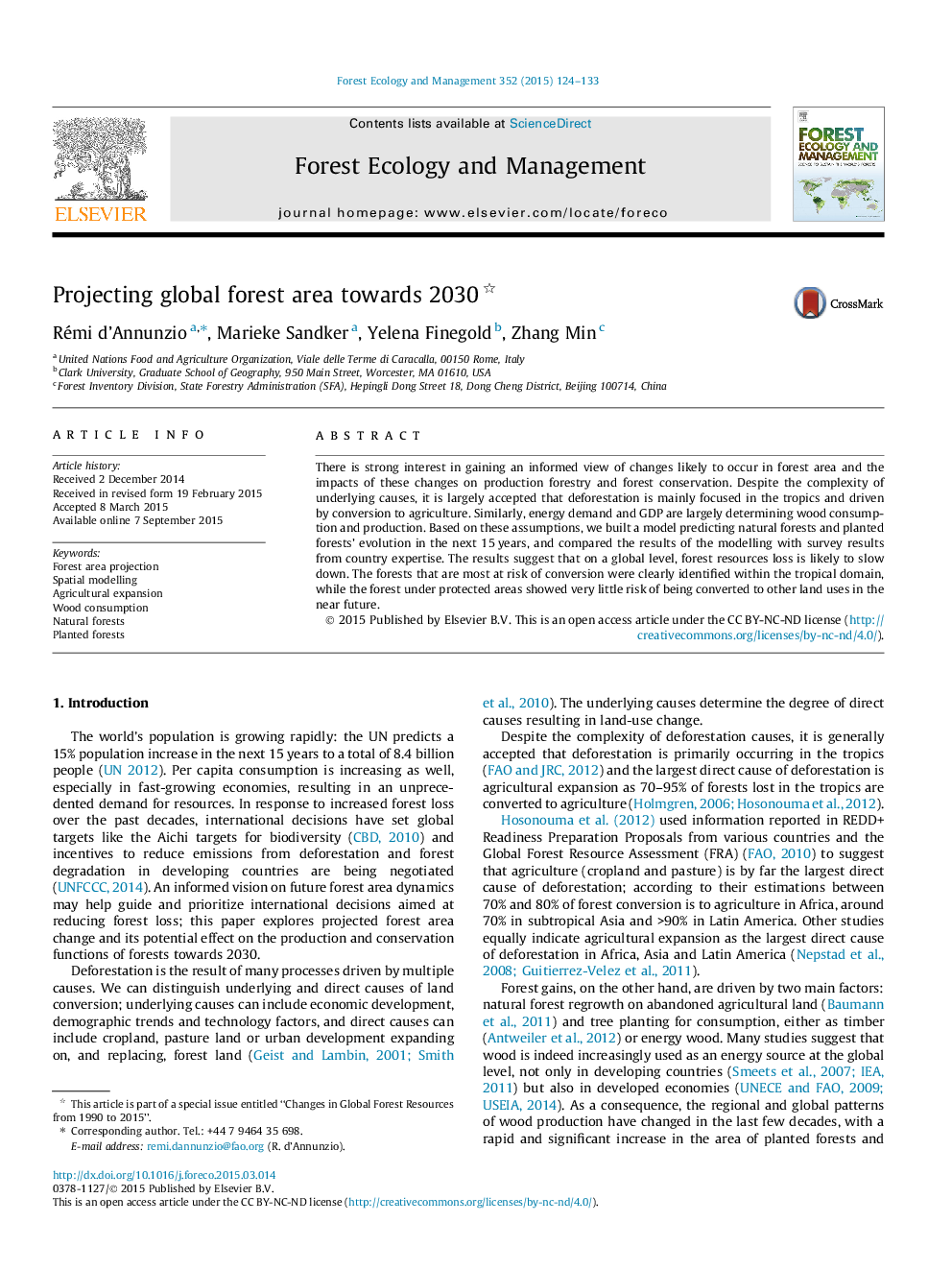| Article ID | Journal | Published Year | Pages | File Type |
|---|---|---|---|---|
| 86118 | Forest Ecology and Management | 2015 | 10 Pages |
•Forest area change to 2030 is projected using an agriculture/wood demand driven model.•We compare the results with country-specific prediction of forest area changes.•Global forest area will decrease by 2030 but the rate of loss will slow down.•Forest under protected areas show little risk of being converted in the near future.•Difference in model and country predictions may be explained by post-2010 policies.
There is strong interest in gaining an informed view of changes likely to occur in forest area and the impacts of these changes on production forestry and forest conservation. Despite the complexity of underlying causes, it is largely accepted that deforestation is mainly focused in the tropics and driven by conversion to agriculture. Similarly, energy demand and GDP are largely determining wood consumption and production. Based on these assumptions, we built a model predicting natural forests and planted forests’ evolution in the next 15 years, and compared the results of the modelling with survey results from country expertise. The results suggest that on a global level, forest resources loss is likely to slow down. The forests that are most at risk of conversion were clearly identified within the tropical domain, while the forest under protected areas showed very little risk of being converted to other land uses in the near future.
